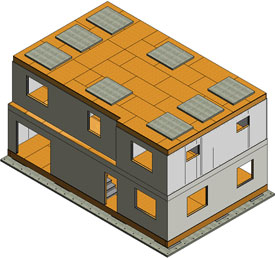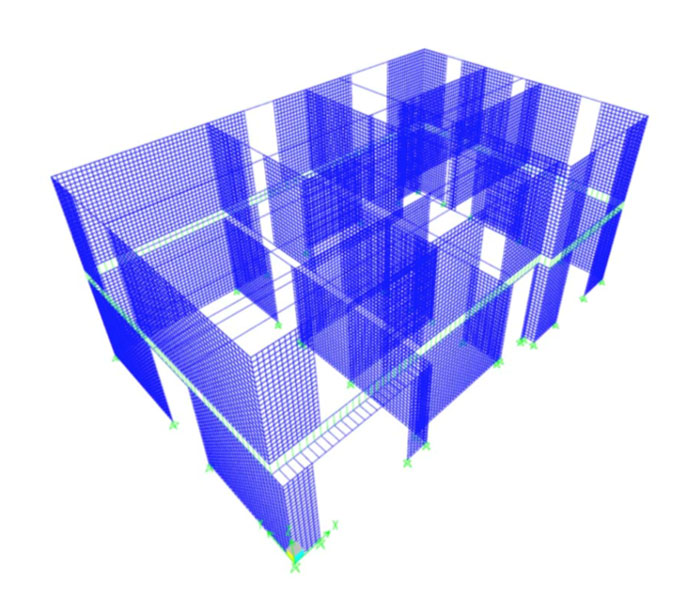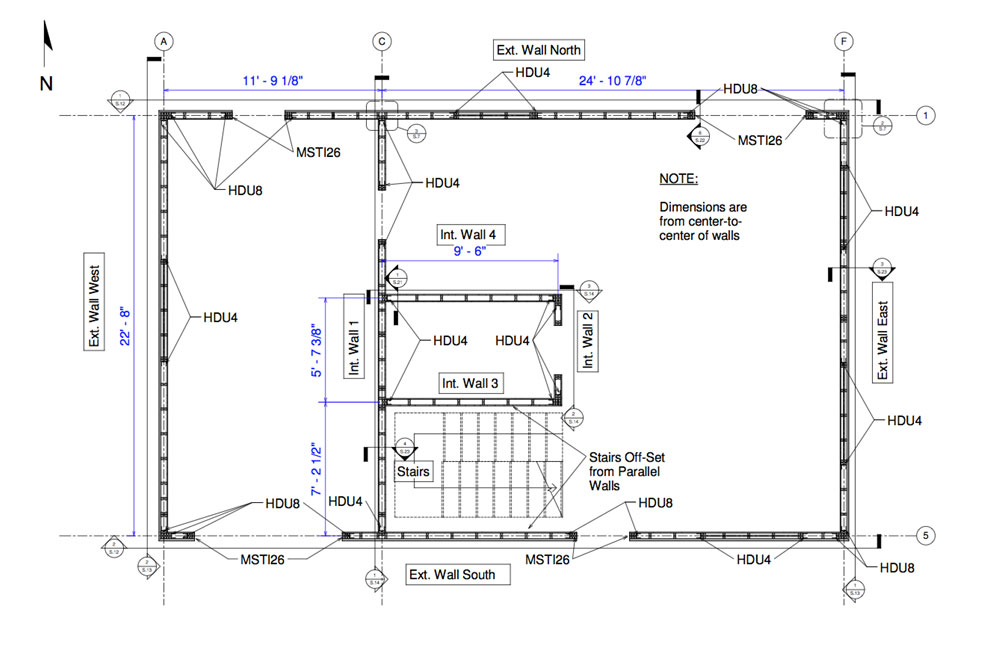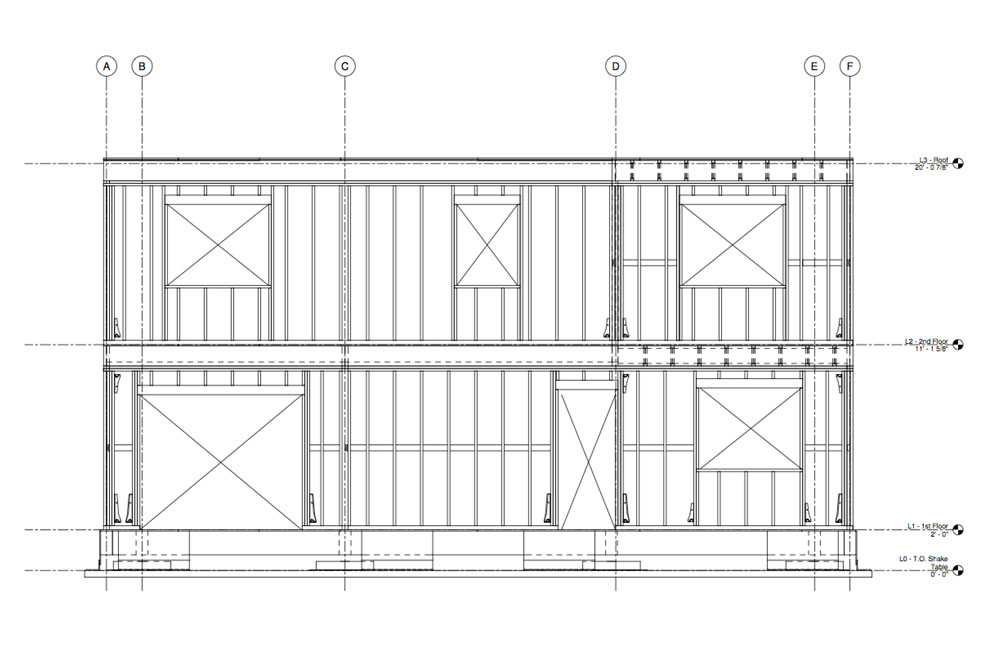Although traditional framed residential structures provide a high level of life safety during an earthquake, their vulnerability to damage can be very costly. After the 1994 Northridge Earthquake, it was estimated that $20 billion were issued in insurance payouts for damaged residences. In addition, over 60,000 people were displaced from their homes for a significant period of time. In order to reduce the damage seen by these structures, the current design standards must be revised to prevent the ultimate load from being reached at large damaging drifts.
In an effort to improve the current design standards, researchers at Stanford University and the California State University, Sacramento are investigating new cost-efficient design and construction methods to dramatically reduce the earthquake deformations and damage. Unibody framing systems with enhanced strength and stiffness and low-cost seismic isolation systems will be investigated to achieve damage reduction. In contrast to conventional seismic design practice, where large structural ductility demands can result in extensive damage to architectural and mechanical building systems, the unibody system will attain reduced deformations and damage by integrating structural and architectural building components in a lateral system. The research is organized around an integrated plan of quasi-static testing, shake table testing, and computational simulations of structural fasteners, subassemblies, and systems.
Connector and small-scale wall tests were conducted at Stanford University to identify construction materials that would accomplish the integration of structural and architectural components. These tests were then complemented with large-scale quasi-static wall tests at California State University at Sacramento and large-scale quasi-static room tests at NEES@Berkeley site. In addition, a low-cost isolation system was developed at Stanford University to complement unibody structures located in high seismic areas. The isolation system consists of flat or dish isolation interfaces of visco-elastic polymers and finished steel. These combinations can take advantage of the enhanced strength and stiffness of unibody walls through higher interface friction than traditional isolation applications that reduces the isolation displacements that must be accommodated, while still transmitting relatively low seismic forces to the superstructure. Small- and large-scale tests of the isolation interface were conducted at Stanford University and NEES@Berkeley, respectively. High-fidelity simulation models were developed and calibrated using these tests results.
For this phase, a full-scale, two-story wood-frame house with wall finishes will be tested at the NEES@UCSD shake table to understand the behavior of unibody structures under dynamic loads. The test will have two phases: 1) Base Isolated and 2) Fixed Base. The structure will be subjected to several large ground motions from DBE to 3x MCE level. The structure will be instrumented with over 100 sensors to monitor global displacements, wall displacements, inter-story drifts, and floor accelerations. A numerical model of the house was created and calibrated using quasi-static tests results to predict the behavior and loads acting on the structure.
The research is funded by the National Science Foundation (NSF) through the George E. Brown, Jr. Network for Earthquake Engineering Simulation (NEES).
Investigators
| PI | Gregory Deierlein, ggd@stanford.edu | Stanford University |
| Co-PI | Eduardo Miranda, emiranda@stanford.edu | Stanford University |
| Co-PI | Benjamin Fell, fellb@csus.edu | California State University, Sacramento |
| Graduate Student | Cristian Acevedo, cacevedo@stanford.edu | Stanford University |
| Graduate Student | Ezra Jampole, ejampole@stanford.edu | Stanford University |
| Graduate Student | Scott Swensen, swensen@stanford.edu | Stanford University |




